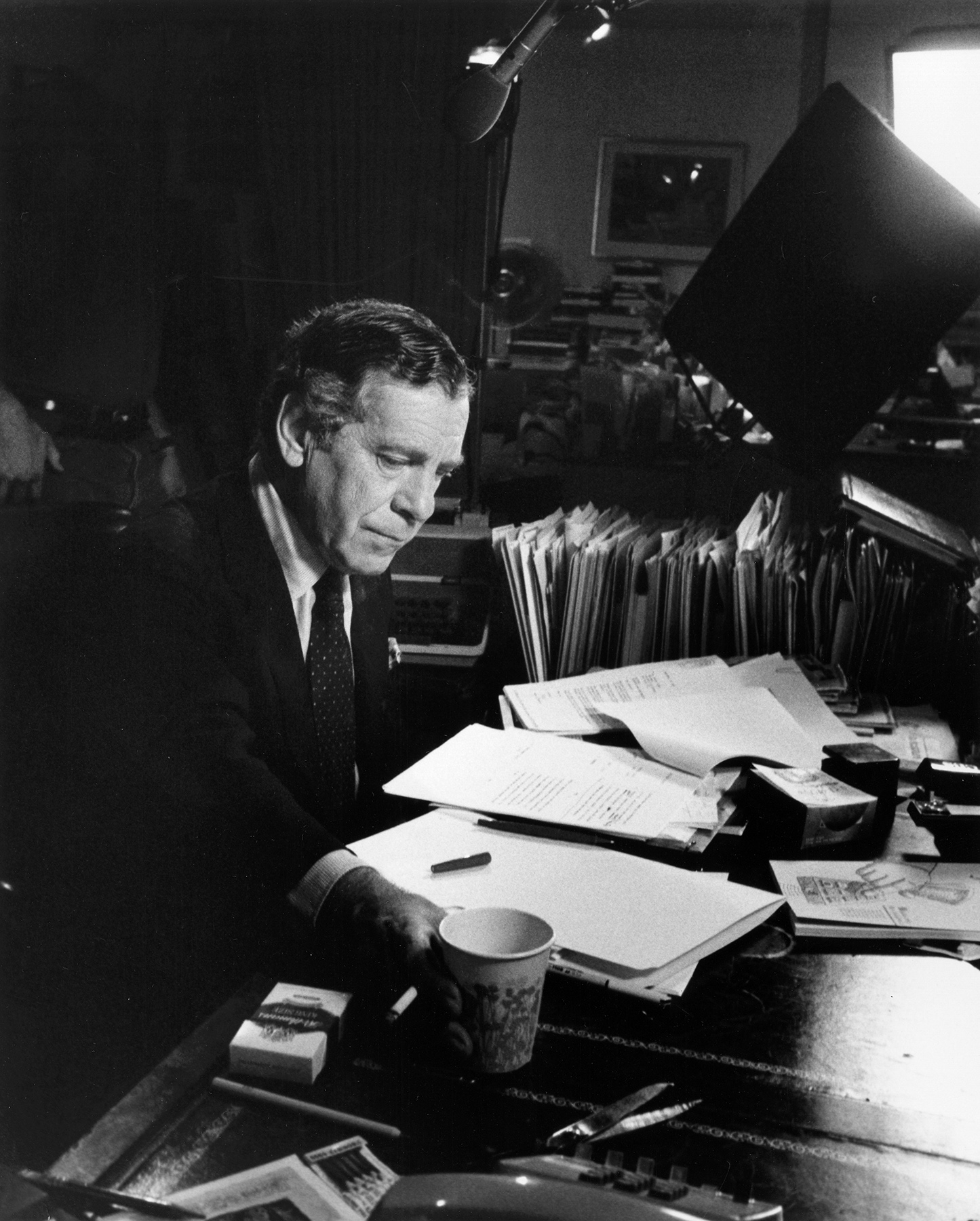![635985804337612758-Safercoffee.jpg [image : 84245364]](http://www.gannett-cdn.com/-mm-/ff510224d9e25d740720dfd1c845798f715fde7e/c=0-282-1445-1517/local/-/media/2016/05/11/USATODAY/USATODAY/635985804337612758-Safercoffee.jpg)
Morley Safer, the globe-trotting CBS correspondent who had filed more than 900 reports for the network's TV news magazine 60 Minutes, died Thursday at his home in Manhattan, CBS Corp. confirmed. He was 84.
![Morley Safer dies a week after retiring from ’60 Minutes’ [video : 84596086]](http://videos.usatoday.net/Brightcove2/29906170001/2016/05/29906170001_4902134033001_4902124200001-vs.jpg?pubId=29906170001)
The network didn't immediately release a cause of death, but said "Safer was in declining health."
The Toronto native was the longest-serving correspondent of the venerable news program, having joined in 1970 and becoming part a formidable team -- with Mike Wallace, Harry Reasoner, Ed Bradley, Dan Rather and Andy Rooney -- that uncovered corruption, confronted public and corporate officials, and set the standard for broadcast magazine journalism.
"He was one of the linchpins for so many years on 60 Minutes," says CBS Chairman-CEO Leslie Moonves. "He was sort of the gentle giant of the group. There was something insightful and humane about him. He was a great journalist; he had all the street cred in the world, but he liked the human interest story."
Safer filed his last 60 Minutes report, a profile of Danish architect Bjarke Ingels, in March. With his health deteriorating quickly, CBS announced his retirement May 11 and ran an hour-long program celebrating Safer's career — “Morley Safer: A Reporter’s Life” — after Sunday’s regular edition of 60 Minutes.
![Morley Safer, local reporter matched wits over Palm Springs' image [oembed : 84627224] [oembed : 84627224]](/Portals/_default/Skins/PrestoLegacy/CommonCss/images/smartembed.png)
"As a writer, reporter, what made Morley's stories stand out was that he had almost a Hemingway style," Jeff Fager, executive producer of 60 Minutes and a close friend, told USA TODAY. "Hemingway was his hero. He always cared about writing. He elevated every story he did because of his writing. That’s not something you come by very often. It’s a very rare talent."
Last Thursday, Fager visited and spoke with Safer in the backyard of his home. "He was at the end of his life. He was ready for that," Fager said.
On Sunday, Safer tweeted: "It’s been a wonderful run, and I want to thank the millions of people who have been loyal to our @60Minutes broadcast. Thank you!" It was his last post on Twitter.
![It’s been a wonderful run, and I want to thank the millions of people who have b [oembed : 84592450] [oembed : 84592450] [oembed : 84592450] [oembed : 84592450] [oembed : 84592450] [oembed : 84592450] [oembed : 84592450] [oembed : 84592450] [oembed : 84592450] [oembed : 84592450] [oembed : 84592450] [oembed : 84592450] [oembed : 84592450] [oembed : 84592450] [oembed : 84592450] [oembed : 84592450] [oembed : 84592450] [oembed : 84592450] [oembed : 84592450] [oembed : 84592450] [oembed : 84592450] [oembed : 84592450] [oembed : 84592450] [oembed : 84592450] [oembed : 84592450] [oembed : 84592450] [oembed : 84592450] [oembed : 84592450] [oembed : 84592450] [oembed : 84592450] [oembed : 84592450] [oembed : 84592450] [oembed : 84592450] [oembed : 84592450] [oembed : 84592450] [oembed : 84592450]](/Portals/_default/Skins/PrestoLegacy/CommonCss/images/smartembed.png)
Like many broadcasters of his generation, Safer began his career as a print journalist, working for newspapers and wire services in Canada and England before joining Canadian Broadcasting Corp. At Canada's largest broadcasting entity, he toured Europe, North Africa and the Middle East on assignments, including the war for Algerian independence. He was the only Western correspondent in East Berlin the night the Communists began building the Berlin Wall in August 1961, according to his bio on CBS' website.
After joining CBS News in 1964, his experience in reporting from war zones served him and the network well. He opened a Saigon bureau in 1965 for CBS as the Vietnam War raged on. In 1967, he returned to London as CBS News’ bureau chief there, but continued to visit Vietnam to cover the war. He often went beyond press briefings to join the soldiers in war zones to file on-the-scene reports.
His piece showing U.S. Marines burning villagers' huts in Cam Ne in 1965 earned Safer a George Polk award, and the work was cited by New York University as one of the 20th century’s best pieces of American journalism. It "angered President Lyndon Johnson so much, he reportedly called CBS President Frank Stanton and said, 'Your boys shat on the American flag yesterday,'” CBS said. Safer wrote about his experience in Vietnam in a book released in 1990, Flashbacks: On Returning to Vietnam.
He received numerous other awards for his work, including 12 Emmys, three Overseas Press Club Awards, three Peabody Awards, two Alfred I. duPont-Columbia University Awards, another George Polk Memorial Award and the Paul White Award from the Radio/Television News Directors Association.
"If you look at his body of work, there isn’t anything like it in the history of journalism. He covered everything imaginable," Fager said.
Safer has said he was never fond of being in front of the camera, preferring the reporting and writing aspects of his job. In many ways, the style suited him for a place at CBS News, which has celebrated and marketed a hard-news approach as its differentiator.
"He wasn’t what you would think of as the perfect-looking character for the TV anchor job," Fager said. "At CBS News, there’s tradition of not being the perfect character of what you are supposed to look like as an anchor. It’s how you tell a story."
Although Wallace and Rather were the more prominent faces of the network, Safer made his mark with understated and lyrical writing. "His voice was very descriptive without being overly written," Fager said. "There was a pace to it. He played that typewriter like an instrument. And he also observed things a lot of people didn’t see."
In their last conversation Sunday after the tribute aired, Safer "was very emotional," Fager said. "He thanked me for how much we've done. I said 'We can't do enough for you.' "
Safer is survived by his wife of 48 years, Jane, one daughter, Sarah Safer, her husband, Alexander Bakal, three grandchildren and a sister and brother.
![Morley Safer Timeline [oembed : 84600500] [oembed : 84600500] [oembed : 84600500] [oembed : 84600500] [oembed : 84600500] [oembed : 84600500] [oembed : 84600500] [oembed : 84600500] [oembed : 84600500] [oembed : 84600500] [oembed : 84600500] [oembed : 84600500] [oembed : 84600500] [oembed : 84600500] [oembed : 84600500] [oembed : 84600500] [oembed : 84600500] [oembed : 84600500] [oembed : 84600500] [oembed : 84600500] [oembed : 84600500] [oembed : 84600500] [oembed : 84600500] [oembed : 84600500] [oembed : 84600500] [oembed : 84600500]](/Portals/_default/Skins/PrestoLegacy/CommonCss/images/smartembed.png)


![Newsman, Morley Safer dies: Nov. 8, 1931- May 19, 2016 [gallery : 84592288]](http://www.gannett-cdn.com/-mm-/4867abc26af56869c7b797c1e005158402a63bb5/c=558-105-1098-567/local/-/media/2016/05/19/USATODAY/USATODAY/635992587931202644-Morley001.JPG)
